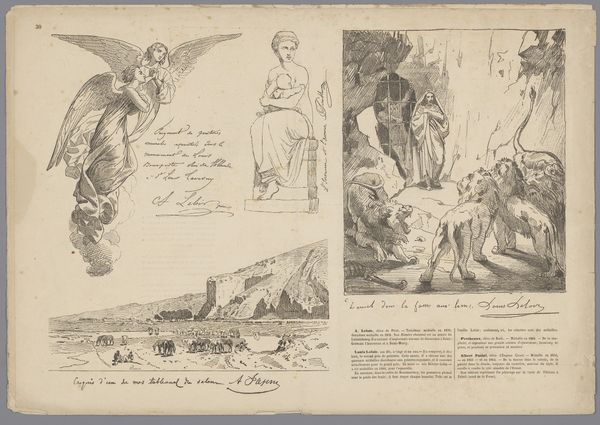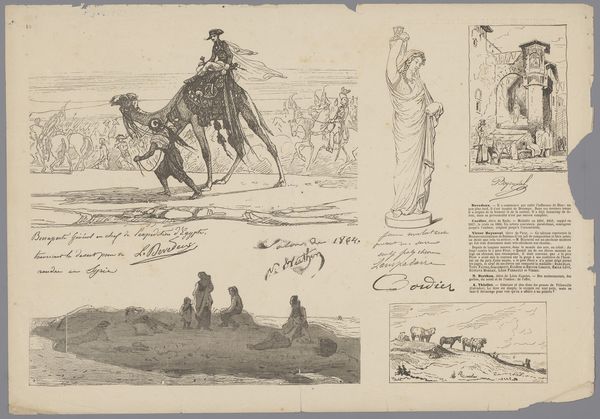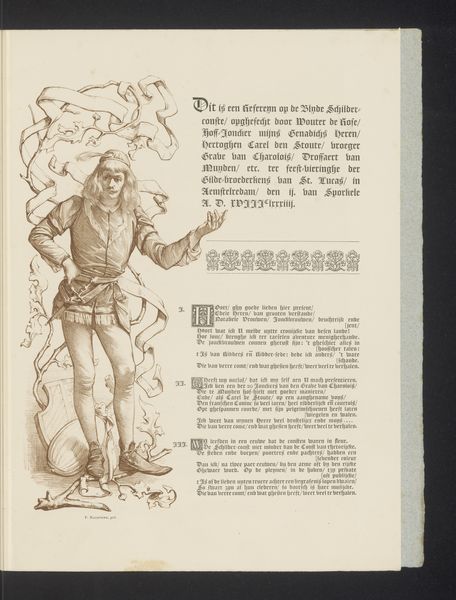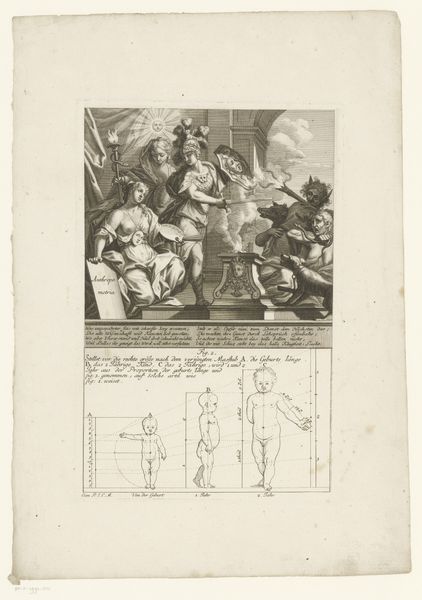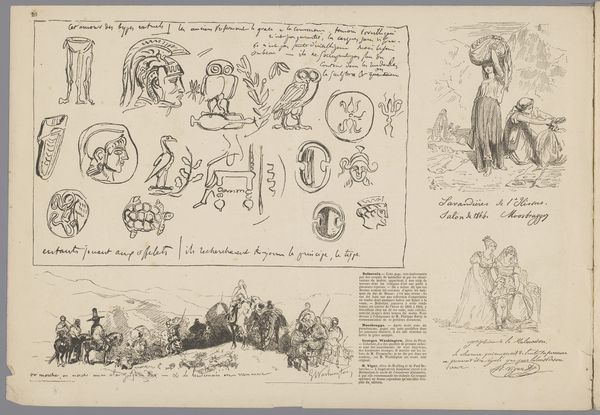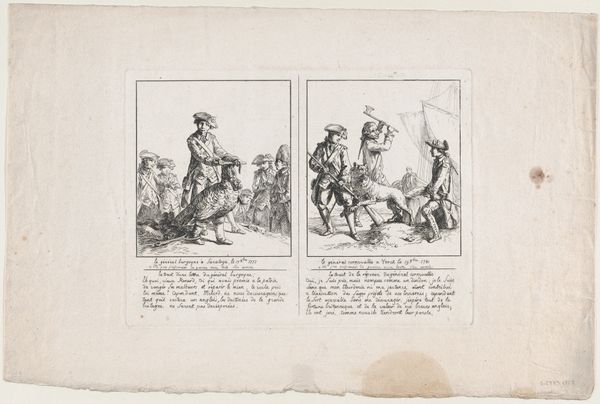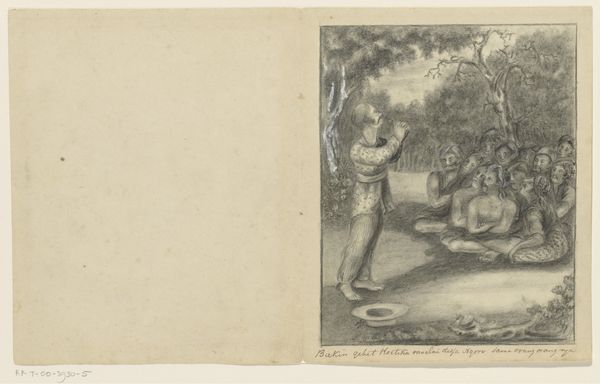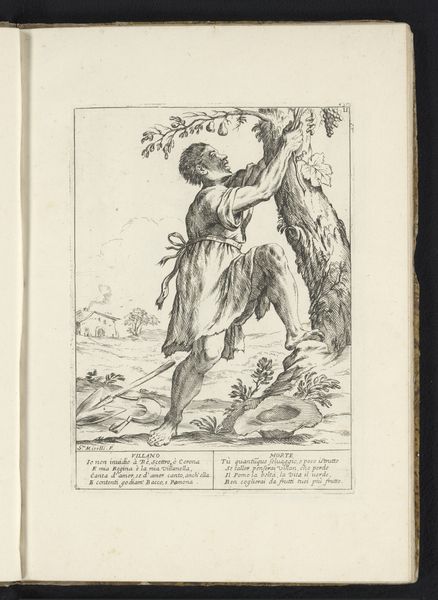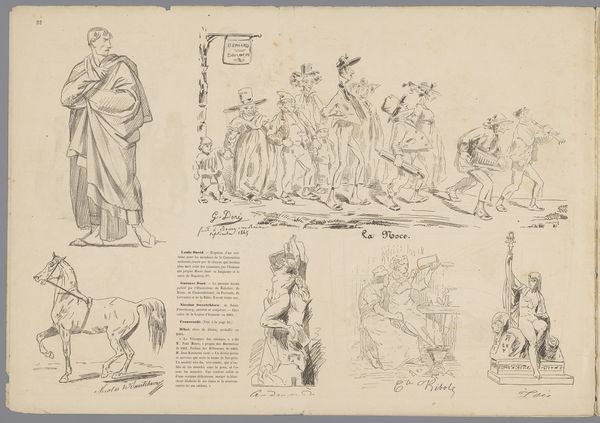
Twee vrouwen in een interieur, staande edelman en een landschap met figuren Possibly 1864 - 1866
0:00
0:00
drawing, paper, pen
#
portrait
#
drawing
#
comic strip sketch
#
aged paper
#
quirky sketch
#
sketch book
#
landscape
#
paper
#
personal sketchbook
#
idea generation sketch
#
sketchwork
#
sketchbook drawing
#
pen
#
storyboard and sketchbook work
#
sketchbook art
Dimensions: height 327 mm, width 468 mm
Copyright: Rijks Museum: Open Domain
This lithograph, made by Firmin Gillot, presents a combination of figures and landscapes, rendered with remarkable detail and sensitivity. The lithographic process allowed Gillot to capture the texture of the costumes and the atmospheric perspective of the outdoor scenes. Lithography, unlike earlier printmaking techniques, relies on the chemical repulsion of oil and water to transfer an image from a stone or metal plate to paper. The artist draws directly onto the plate with a greasy crayon, and the non-image areas are treated to repel ink. This directness allowed for a more spontaneous and painterly effect, evident in the fluid lines and tonal variations seen here. The lithograph facilitated mass production of images, making art more accessible to a wider audience. Gillot’s skilled manipulation of this technique highlights the intersection of artistic expression and industrial innovation, blurring the lines between fine art and commercial reproduction. It encourages us to consider the social and economic contexts that shape artistic practice, and the ways in which technology can democratize access to art.
Comments
No comments
Be the first to comment and join the conversation on the ultimate creative platform.
